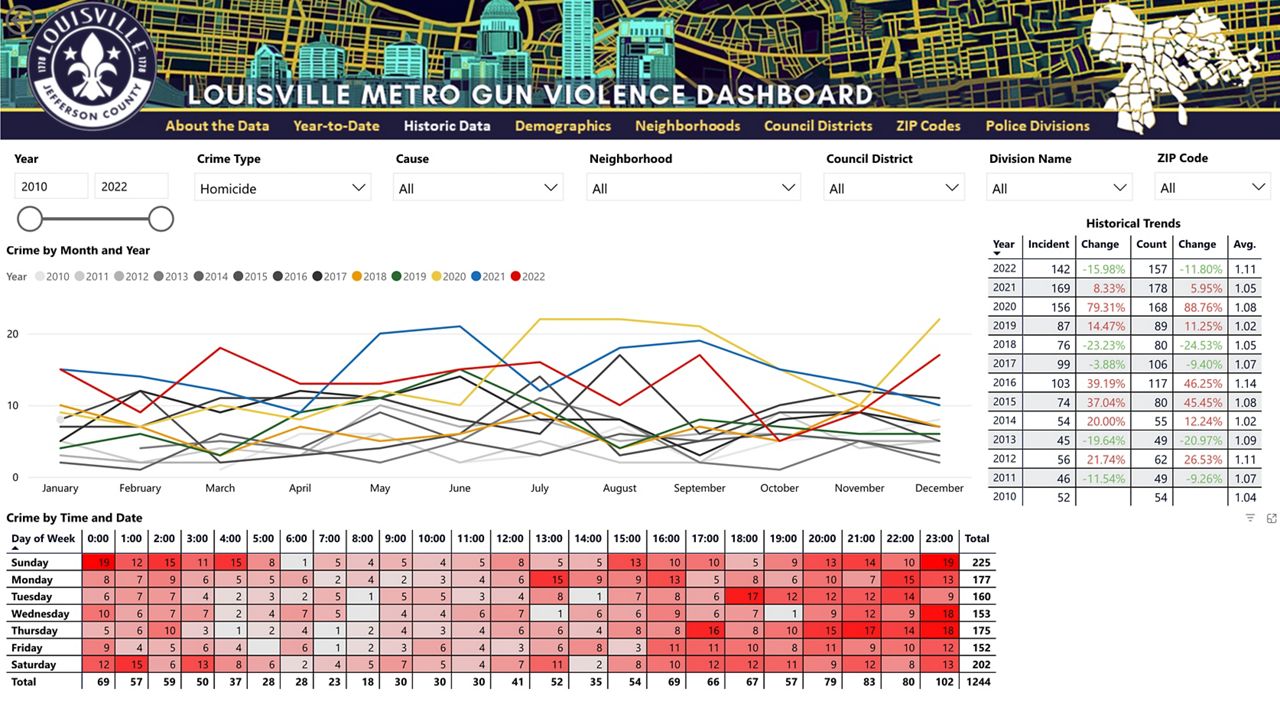LOUISVILLE, Ky. — Certain crime data are now more accessible in Louisville. Louisville Metro Government unveiled an online gun violence dashboard that tracks homicides and non-fatal shootings dating back to 2010.
Along with historical data, the dashboard is updated as new crimes happen.
The city hopes this new tool will aid the public and community organizations in combating gun violence.

“And so it is our hope, our belief that the information that we are transparently providing in real time on the Louisville Gun Violence Dashboard can lead to action, can help us reduce the amount of gun violence that is plaguing our city,” Louisville Mayor Craig Greenberg, D-Louisville, said.
The dashboard has several filters to narrow down the data. It includes year, cause of death, neighborhood, council district, police division, and ZIP code. Year-over-year trends and what time of day crimes happen are viewable.
Paul Callanan, director of Louisville’s Office of Safe and Healthy Neighborhoods, explained how this data can be used.
“For example, our community violence intervention partners can use the information to determine the most effective and efficient staffing patterns when implementing violence interruption strategies,” Callanan said. “Private and public funders can determine if submitted proposals seek to serve those locations which have the greatest need.”
Before now, this kind of information was available to the public, but Callanan comments it was not easy to access.
Louisville Metro Police Department also has had access to this data and has weekly meetings on crime trends.
“So now that community can help us, they can understand where and why officers are in certain neighborhoods and why, you know, why we might be going door to door asking questions and things like that. And so now the community has that information that we’ve had,” Assistant Police Chief Emily McKinley said.
The dashboard was funded by a $100,000 grant from the national Everytown for Gun Safety Support Fund, an organization focused on reducing gun violence.



